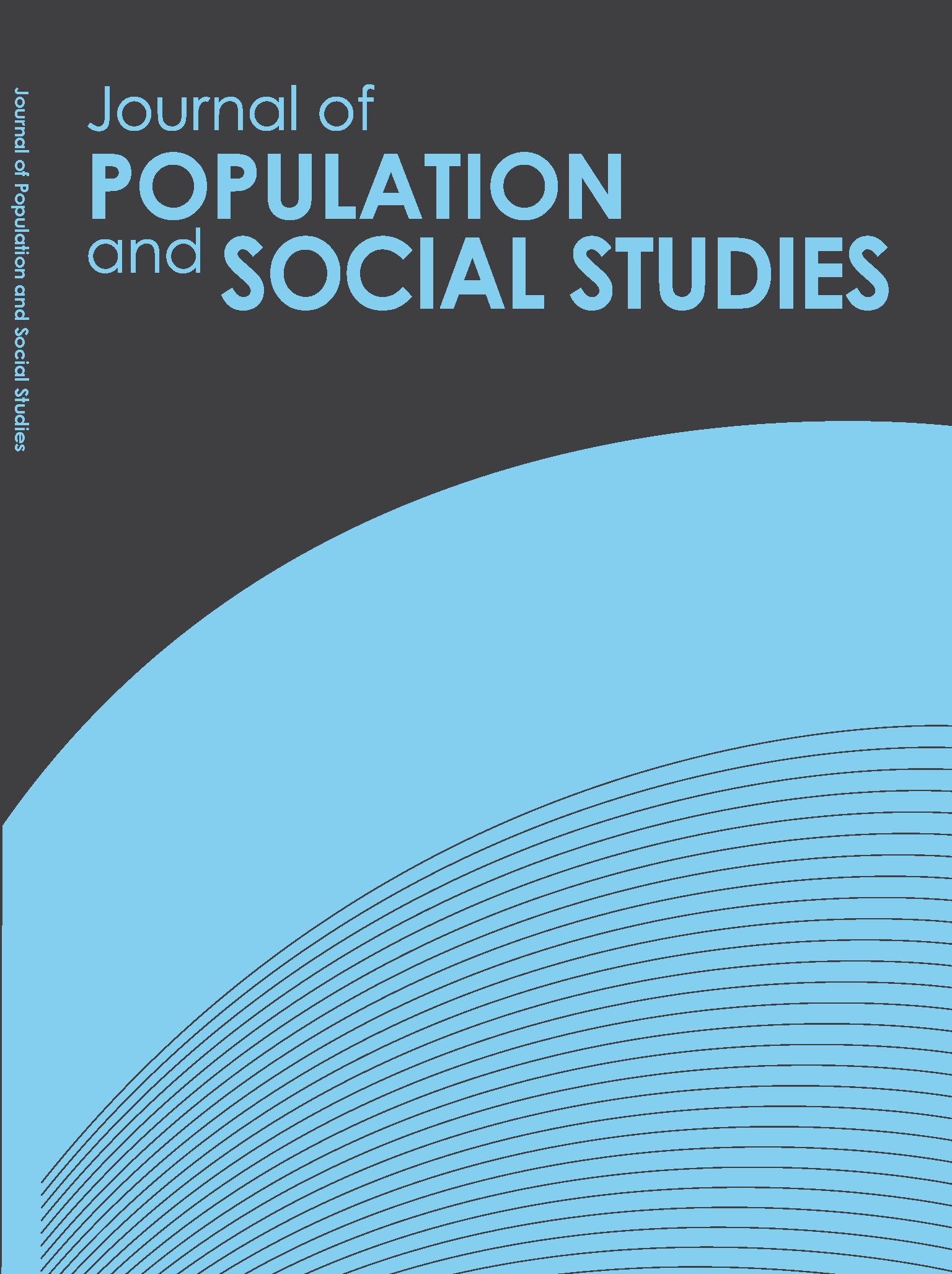The Giving Behavior of Households in Thailand
Main Article Content
Abstract
Giving is an act where one transfers a part of one’s own resources to others. In this sense, giving is a unique form of resource redistribution that can ultimately have an impact on economic inequality. While there are many factors that explain why and how people give, the focus of this paper is to explore the role of family and household characteristics in influencing giving behavior in Thailand. In this paper, I consider three categories of giving behavior by households, which include contributions made to i) persons outside the household, such as remittances, ii) religious activities and iii) charitable institutions/organizations. I draw on the extensive list of household expenditures from the Socio-Economic Survey 2011 conducted by the National Statistical Office of Thailand. Using a two-part model with separate equations to model the probability of giving and the level of giving expenditure conditional on giving, the findings suggest that household size increases overall giving in all categories, while the number of children in the household reduces giving activities in all categories. The current demographic transition means that household characteristics in Thailand are changing, which can lead to future changes in giving patterns. Efforts to maintain familial piety and support people’s active engagement in their society by making giving easier and more attractive can serve as a main mechanism to create a far-reaching impact for building a caring future in Thailand.
Article Details
References
Banks, J. & Tanner, S. (1999). Patterns in household giving: Evidence from U.K. data. Voluntas: International Journal of Voluntary and Nonprofit Organizations, 10(2).
Cabinet Office & Behavioural Insights Team. (2013). Applying behavioural insights to charitable giving. Retrieved from https://www.gov.uk/government/uploads/system/uploads/attachment_data/file/203286/BIT_Charitable_Giving_Paper.pdf
Cameron, C. & Trivedi, P. K. (2005). Microeconometrics: Methods and applications. New York: Cambridge University Press.
Cowley, E., McKenzie, T., Pharoah, C. & Smith, S. (2011). The new state of donation: Three decades of household giving to charity 1978-2008. Retrieved from http://www.cgap.org.uk/uploads/reports/The%20new%20state%20of%20donation.pdf
Curran, S.R. (1996). Intra Household exchange relations: Explanations for education and migration outcomes. (Seattle Population Research Center Working Paper No. 96-5). Seattle: University of Washington.
Curran, S.R. & Saguy, A. C. (2001). Migration and cultural change: A role for gender and social networks? Journal of International Women's Studies, 2(3), 54-77.
DeJong, G., Richter, K. & Isarabhakdi, P. (1995).Gender, values, and intentions to move in rural Thailand. International Migration Review, 30(3), 748-770.
Dhammananda, K. S. (2002). What Buddhists believe: Expanded 4th edition. Kuala Lumpur: Buddhist Missionary Society Malaysia.
Duan, N., Manning, W.G., Morris, C. N. & Newhouse, J. P. (1983). Choosing between the sample-selection model and the multi-part model. Journal of Business and Economic Statistics 2(3), 283-289.
Hoddinott, J. (1994). A model of migration and remittances applied to Western Kenya. Oxford Economic Papers, 46, 459-476.
Institute for Population and Social Research. (2013). Mahidol Population Gazette: Population of Thailand. Salaya: Mahidol University.
Kapur, D. & McHale, J. (2003) .Migration’s new payoff. Foreign Policy, 139(November/December), 49-57.
Knodel, J. & Saengtienchai, C. (1996). Family care for rural elderly in the midst of rapid social change: The case of Thailand. Social Change, 26(2), 98-115.
Knodel, J., Saengtienchai, C. & Sittitrai, W. (1995). Living arrangements of the elderly in Thailand: Views of the populace. Journal of Cross-Cultural Gerontology, 10, 79-111.
Lillard, L. & Willis, R.J. (1997). Motives for intergenerational transfers: Evidence from Malaysia. Demography, 34(1), 115-134.
Limanonda, B. (1995). Families in Thailand: Beliefs and realities. Journal of Comparative Family Status, 26(1), 67-83.
McKenzie, T. & Pharoah, C. (2013). A decade of donations in the UK: Household gifts to charity, 2001-11. Retrieved from http://www.cgap.org.uk/uploads/Briefing%20Notes/CGAP%20BN11%20Decade%20of%20donations.pdf
Osaki, K. (2003). Migrant remittances in Thailand: Economic necessity or social norm? Journal of
Population Research, 20(2), 203-222.
Piotrowski, M. (2008). Intergenerational relations in a context of industrial transition: A study of agricultural labor from migrants in Nang Rong, Thailand. Journal of Cross-Cultural Gerontology, 23, 17-38.
Poirine, B. (1997). A theory of remittances as an implicit family loan arrangement. World Development, 25, 589-611.
Punpuing, S. & Richter, K. (2011). Urbanization and migration impact. In G. Jones & W. Im-Em (Eds.), Impact of Demographic Change in Thailand (pp. 99-113). Bangkok: United Nations Population Fund (UNFPA) and the National Economic and Social Development Board of Thailand (NESDB).
Taylor, E. J. (1999).The new economics of labour migration and the role of remittances in the migration process. International Migration, 37(1), 63-87.
Thailand National Statistical Office. (1980). Population and housing census. Bangkok: National Statistical Office.
Thailand National Statistical Office. (2010). Population and housing census. Bangkok: National Statistical Office.
Thailand National Statistical Office. (2011). Socio-Economic Survey. Bangkok: National Statistical Office.
Thai Revenue Department. Tax deductable items. Retrieved from http://www.rd.go.th/publish/557.0.html
VanWey, L. K. (2004). Altruistic and contractual remittances between male and female migrants and
households in rural Thailand. Demography, 41(4), 739-756.
World Bank. (2006). Global Economic Prospects 2006: Economic implications of remittances and migration. Washington, DC: World Bank.


